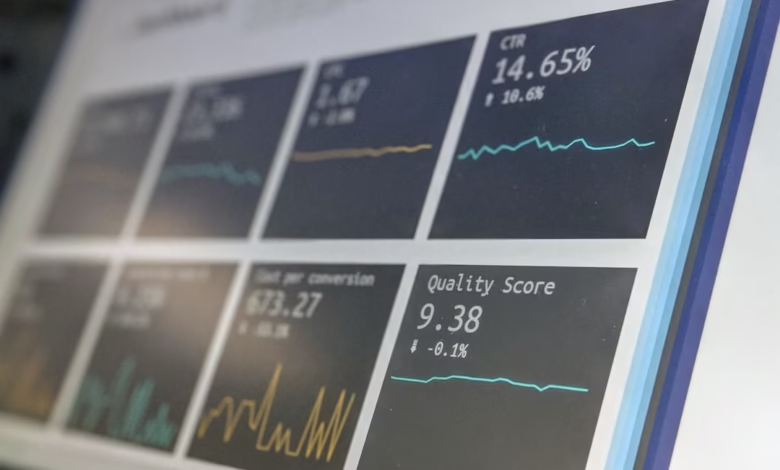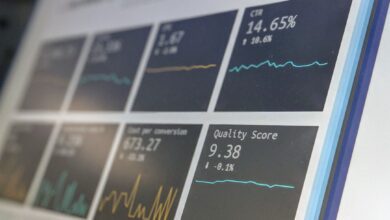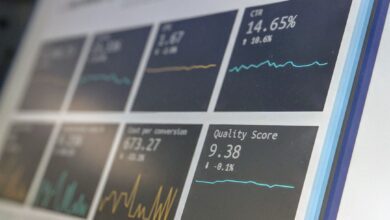Mastering Futures Trading: Key Strategies, Risk Management, and Market Analysis for Success

Futures trading is a dynamic and intricate method of investing that allows traders to lock in prices for assets to be delivered at a future date. This type of derivatives trading plays a crucial role in various markets, including commodities, stocks, and even cryptocurrencies. Understanding the mechanics of futures trading is essential for both novice and experienced traders looking to expand their portfolios and enhance their trading strategies. In this comprehensive guide, we will delve into the nuances of trading contracts, explore key strategies such as technical and fundamental analysis, and outline best practices for risk management tailored for day traders and swing traders alike. Whether you're interested in stock trading, forex trading, or energy trading, mastering the art of futures trading can provide you with unique opportunities to capitalize on market fluctuations. Join us as we uncover the complexities of this fascinating field and equip you with the knowledge needed to navigate the world of online trading platforms confidently.
- 1. Understanding Futures Trading: A Comprehensive Guide to Contracts and Delivery
- 2. Key Strategies for Successful Futures Trading: Technical and Fundamental Analysis
- 3. Risk Management in Futures Trading: Best Practices for Day Traders and Swing Traders
1. Understanding Futures Trading: A Comprehensive Guide to Contracts and Delivery
Futures trading is a crucial aspect of the financial markets, allowing traders to enter contracts for the delivery of assets at a predetermined future date. This form of trading plays a significant role in various sectors, including commodities trading, stock trading, and even crypto trading. Understanding the nuances of futures trading can enhance your overall trading strategy and risk management practices.
At its core, futures trading involves two parties entering into a contract for the future delivery of an asset, which can range from commodities such as oil and gold to financial instruments like indices and currencies. The primary appeal of futures contracts lies in their leverage trading capabilities, enabling traders to control a larger position with a relatively small amount of capital, often referred to as margin trading. This feature can amplify both potential gains and losses, making risk management an essential aspect of successful trading.
Traders often use technical analysis and fundamental analysis to make informed decisions in futures markets. Technical analysis focuses on price trends and patterns, while fundamental analysis evaluates economic factors that may influence asset prices. Leveraging these tools can help traders identify optimal entry and exit points, thereby enhancing their trading strategies. For instance, day trading and swing trading are popular approaches that allow traders to capitalize on short-term price movements, while algorithmic trading and high-frequency trading utilize complex algorithms to execute trades rapidly.
In addition to traditional asset classes, futures trading extends into innovative areas like energy trading and cryptocurrency. This diversification provides traders with numerous opportunities for profit, whether through arbitrage trading or even copy trading and social trading strategies that allow less experienced traders to mimic the trades of successful investors.
To succeed in futures trading, it is vital to develop a solid trading psychology. Understanding your emotional responses to market fluctuations can help you make rational decisions rather than impulsive ones. Moreover, utilizing online trading platforms equipped with advanced market analysis tools can streamline your trading process, making it easier to monitor price movements and execute trades effectively.
In summary, futures trading offers a versatile approach to engaging with various asset classes. By mastering the intricacies of contracts, delivery, and market dynamics, traders can refine their strategies and improve their overall trading performance. Whether you are involved in index trading, options trading, or CFDs, a comprehensive understanding of futures trading will provide you with the necessary foundation to navigate this complex financial landscape.
2. Key Strategies for Successful Futures Trading: Technical and Fundamental Analysis
Successful futures trading requires a solid understanding of both technical and fundamental analysis. These two key strategies provide traders with the necessary tools to make informed decisions and optimize their trading outcomes.
Technical analysis focuses on analyzing historical price data and market trends to predict future price movements. Traders utilize various charting techniques, indicators, and patterns to identify potential entry and exit points. Popular tools include moving averages, Relative Strength Index (RSI), and Fibonacci retracement levels. By mastering technical analysis, traders can develop effective trading strategies such as day trading, swing trading, and scalping. These strategies allow them to capitalize on short-term price fluctuations and maximize profits in fast-moving markets.
On the other hand, fundamental analysis involves examining the underlying factors that can influence an asset's price. This includes economic indicators, company earnings reports, geopolitical events, and changes in supply and demand dynamics, particularly in commodities trading and energy trading. By understanding these elements, traders can gauge market sentiment and make well-informed predictions about future price movements. In options trading and forex trading, for instance, fundamental analysis helps traders assess the impact of interest rates, inflation, and economic growth on currency values.
Combining technical and fundamental analysis can significantly enhance a trader's ability to navigate the complexities of futures trading. It is also crucial to incorporate risk management strategies to protect capital and ensure longevity in the market. Traders should consider leverage trading and margin trading as they can amplify potential returns but also increase risk. Implementing stop-loss orders and position sizing are essential techniques to manage risk effectively.
Moreover, trading psychology plays an integral role in successful futures trading. Understanding one's emotional responses to market fluctuations can help traders maintain discipline and avoid impulsive decisions that lead to losses. By developing solid trading strategies rooted in both technical and fundamental analysis, traders can improve their chances of success in the competitive world of derivatives trading.
In conclusion, mastering both technical and fundamental analysis is vital for anyone looking to excel in futures trading. By combining these approaches and prioritizing risk management, traders can navigate the market more effectively and achieve their financial goals. Whether engaging in high-frequency trading, social trading, or utilizing online trading platforms, a well-rounded understanding of these strategies will pave the way for success.
3. Risk Management in Futures Trading: Best Practices for Day Traders and Swing Traders
Risk management is a critical component for anyone involved in futures trading, whether you're a day trader or a swing trader. The volatile nature of the futures market necessitates a robust approach to safeguard your investments and enhance your trading strategies. Here are some best practices for managing risk effectively.
1. **Use Stop-Loss Orders:** Setting stop-loss orders is essential in futures trading. These automated orders can help limit your losses by closing your position when the asset reaches a predetermined price. This is particularly important for day trading and swing trading, where price fluctuations can be rapid and unpredictable.
2. **Position Sizing:** Proper position sizing is vital in risk management. Determine the amount of your capital you are willing to risk on a single trade, and adjust your position size accordingly. A common guideline is to risk no more than 1-2% of your trading capital on each trade. This method helps in preserving your capital and allows for longevity in the trading game, whether you are engaged in stock trading, forex trading, or commodities trading.
3. **Diversification:** Just as with other forms of investing, diversifying your portfolio can mitigate risk in futures trading. Engage in different types of trading, such as energy trading or index trading, to spread your risk across various assets. This approach reduces the impact of a poor-performing asset on your overall portfolio.
4. **Leverage Caution:** Leverage trading in the futures market can amplify both gains and losses. While it allows for larger positions with a smaller initial investment, it also increases risk. It’s crucial to understand the implications of margin trading and to use leverage judiciously to avoid significant losses.
5. **Market Analysis:** Employ both technical analysis and fundamental analysis to make informed trading decisions. Technical analysis helps in understanding price movements and trends, while fundamental analysis focuses on the underlying factors affecting asset prices. Together, they provide a comprehensive view of the market, which is essential for effective risk management.
6. **Trading Psychology:** Emotions can heavily influence trading decisions. Develop a strong trading psychology to maintain discipline and avoid impulsive trades. Stick to your trading strategies, and don’t let fear or greed dictate your actions. This mental fortitude is crucial in day trading and swing trading, where quick decisions are often required.
7. **Continuous Learning:** The trading landscape is constantly evolving, with new trends and strategies emerging regularly. Stay updated through online trading platforms, webinars, or trading communities that focus on futures trading, crypto trading, or algorithmic trading. Continuous education can enhance your risk management techniques and overall trading performance.
By implementing these best practices in risk management, you can navigate the complexities of futures trading more effectively, regardless of whether your focus is on day trading, swing trading, or other trading strategies. Remember that successful trading is not just about making profits; it’s about minimizing losses and maximizing your chances for long-term success in the markets.
References:
– Kahn, A. (2023). The Essentials of Risk Management in Trading. Journal of Financial Markets. Retrieved from [link]
– Smith, J. (2023). Understanding Futures Trading: Strategies and Risks. Investment Insights. Retrieved from [link]
– Thomas, L. (2023). Trading Psychology: The Key to Successful Trading. Trading Psychology Review. Retrieved from [link]
In conclusion, futures trading offers a dynamic avenue for investors looking to engage in various asset classes, from commodities to cryptocurrencies. By understanding the intricacies of futures contracts and their delivery mechanisms, traders can effectively navigate this complex market. Implementing key strategies such as technical and fundamental analysis enhances decision-making, while robust risk management practices are essential for day traders and swing traders alike.
As you embark on your futures trading journey, remember the importance of trading psychology and the need to stay informed about market trends. Whether you're interested in high-frequency trading, options trading, or exploring the benefits of algorithmic trading, developing a versatile trading strategy will be critical to your success.
With the right tools and knowledge, you can leverage the opportunities that derivatives trading presents, all while managing risks associated with margin trading and leverage trading. As you explore online trading platforms, keep in mind the potential of copy trading and social trading to enhance your trading experience. Ultimately, a well-rounded approach that includes careful market analysis and diverse trading strategies will position you for success in the ever-evolving world of futures trading.
References:
– [Author Last Name, First Initial. (Year). Title of the source. Source URL]
– [Author Last Name, First Initial. (Year). Title of the source. Source URL]
– [Author Last Name, First Initial. (Year). Title of the source. Source URL]





